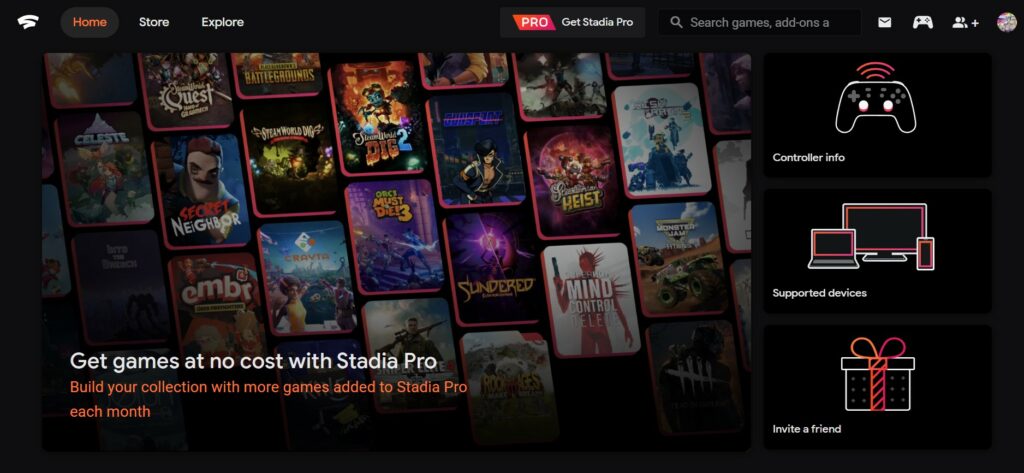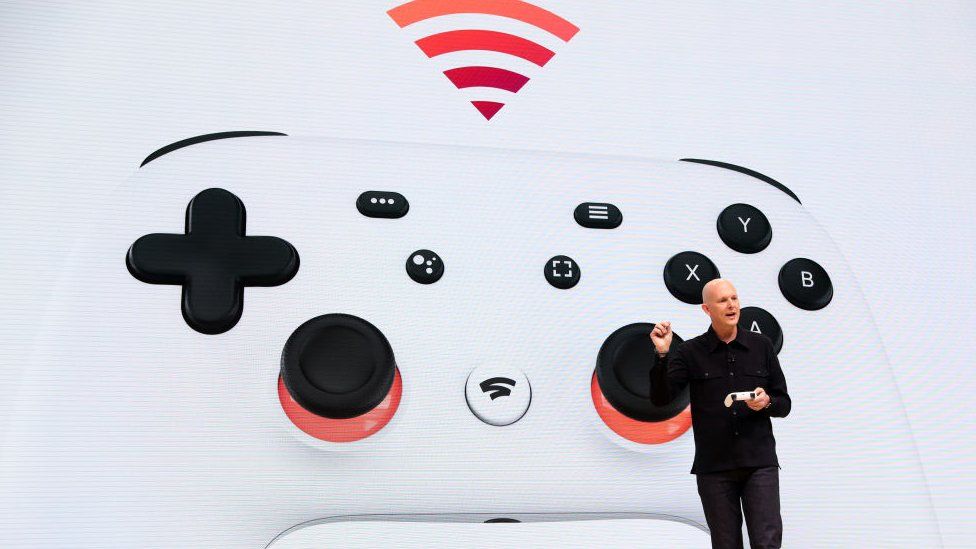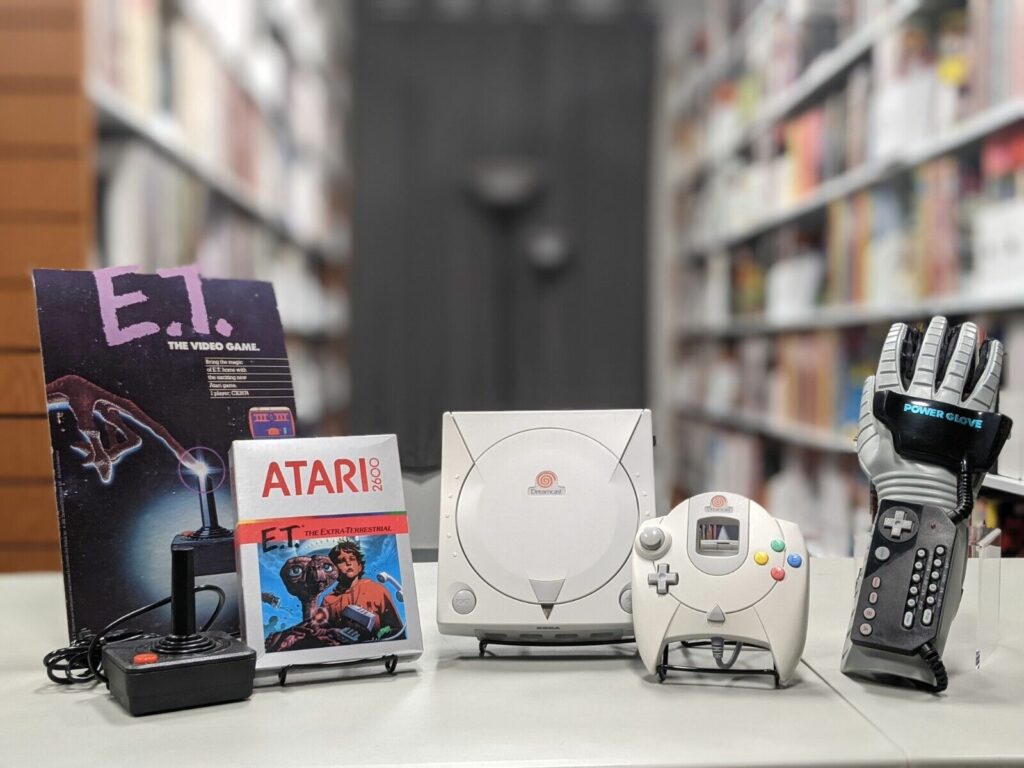Stadia’s failure shows the world isn’t ready for – and doesn’t need or want – cloud gaming
In new that will surprise precisely no-one, Google has announced that its cloud-based Stadia game-streaming service is to close down — on January 18, 2023, to be exact. Not only that, but the tech giant will be offering full refunds not only for access to games purchased on the service, but also to those who purchased Stadia hardware bundles, such as the Stadia controllers that came with a Google Chromecast.
Google estimates that most refunds will be handled automatically, with the money returning to the payment source used to purchase the services or hardware, and reckons that this will all be taken care of by the time the service shuts down. For refunds that are not able to be processed automatically, Google will send an email detailing how to claim your money back.

Stadia launched in November of 2019 to widespread criticism thanks to its baffling business model, which seemingly required players to purchase both a subscription and access to games on the service. Google clarified that the subscription was optional — though it provided a better service — and that free games would be offered to subscribers.
The main criticism remained, however: when it comes to cloud streaming services, you don’t actually own anything, so “buying” a game is a big risk. Were Google not to offer the refunds they appear to be promising, anyone who purchased access to games on Stadia would be left out of pocket with absolutely nothing to show for it.
Stadia’s supposed selling point was that it offered access to top-end triple-A games from anywhere, be it through your web browser, your Chromecast or your mobile device. There was no need to have an expensive gaming PC or console, they argued, because you could simply play your games on whatever device you had to hand.
There were a number of inherent flaws in this argument, however. Firstly, those who are interested in playing top-end triple-A games almost certainly already have some means of playing them in a satisfactory manner, be that a decent gaming PC or a console. And the ability to access those games from anywhere was already provided through systems such as Steam Link and PlayStation Remote Play.

Secondly, despite the fact that you didn’t need a gaming PC or console to enjoy Stadia games, you did most certainly need a fast Internet connection to be able to keep up with the 1080p to 4K video streaming from the service — and for your device to be able to send your own inputs back to the service in a timely manner. And while video streaming isn’t as demanding as rendering a game in real time, a bit of extra processing and graphic oomph certainly doesn’t hurt matters, especially when it comes to the more lively games.
Even on top-end fibre-optic Internet connections, Stadia still occasionally struggled, too, resulting in grainy, artifacted video and unresponsive controls at times. While it was admittedly quite impressive when it did work, these issues occurred often enough even on fast connections to regularly remind you that you were experiencing the game in a somewhat sub-optimal way.
That matter of ownership always burned at the back of everyone’s mind, too. On Stadia, you were often paying the full retail price of a game for what amounted to an indefinite rental at best. Had the system taken an approach more similar to Microsoft’s Game Pass — an initiative that has its own share of problems, but that’s a discussion for another time — things might have been more palatable for a broader audience. The prospect of being able to pay a single subscription and try out a whole bunch of games as much as you want before perhaps committing to buying them on a PC or console is actually quite an appealing one.
But that’s not what we had. Outside of the “free” games for Stadia Pro subscribers, you had to pay up. And, right now, that’s just not something people are willing to do — even for those who already go all-digital with their software purchases. It’s still a big leap between paying for a digital download of a piece of software — which, in many cases, you’re able to take a backup of in case you ever lose access to the original download — and paying for access to an individual piece of software running on someone else’s machine somewhere else in the world.
As of now, no-one has managed to do a good job of explaining how the benefits of cloud gaming outweigh the significant drawbacks. And one suspects that Google already knew they were on to a loser with Stadia pretty much as soon as they announced it; as video game historian Frank Cifaldi noted on Twitter, the company exhibited Stadia at GDC alongside some of gaming’s most notorious “failures”, including E.T. for the Atari 2600, the Nintendo Power Glove and the Sega Dreamcast, on the grounds that “anything you dream can be built”.
Cifaldi is now auctioning off the copy of E.T., the Power Glove and the Dreamcast he loaned to Google for charity; at the time of writing the bids have exceeded $1,500. Notably, there’s nothing Stadia-related in the bundle because, as Cifaldi notes, “stop asking if it comes with a Stadia. I don’t have a Stadia, no one has a Stadia, if they did then we wouldn’t be here cashing in on their misfortune.”

And I think that’s part of the problem. Stadia never really existed as anything more than a concept. Yes, you could buy a Stadia “pack” — but that was just a controller and a Chromecast. There was no Stadia console or any sort of device to feel any sort of attachment to — and as a result people found themselves struggling to understand what Stadia really was or what place it might have in their lives. The service couldn’t even hold on to its own exclusives.
If you want to play video games, buy a computer or console. While it’s clear there will be continued attempts to make cloud gaming work as time goes on, I suspect that situation isn’t going to be changing any time soon. Right now, if you want the best possible modern gaming experience there is, your best bet is to get yourself a decent gaming PC and complement that with a Nintendo Switch for its exclusives. And this isn’t even getting into the possibilities of retro-centric systems — but if we did that we’d be here all day.
Anyway, Stadia sucked and no-one’s going to miss it. It’s a shame it took Google so long to realise what everyone else already realised almost immediately after it was announced. But at least we can finally close the book on this particularly stupid chapter of gaming history.
Join The Discussion
Rice Digital Discord
Rice Digital Twitter
Rice Digital Facebook
Or write us a letter for the Rice Digital Friday Letters Page by clicking here!
Disclosure: Some links in this article may be affiliate links, which means we may earn a small commission if you make a purchase after clicking on them. This is at no additional cost to you and helps support Rice Digital!
- Letter from the Editor: passing the torch - June 30, 2023
- Super Woden GP 2 is looking promising - June 30, 2023
- Inti Creates is making a 32 bit-style Love Live action platformer - June 26, 2023



